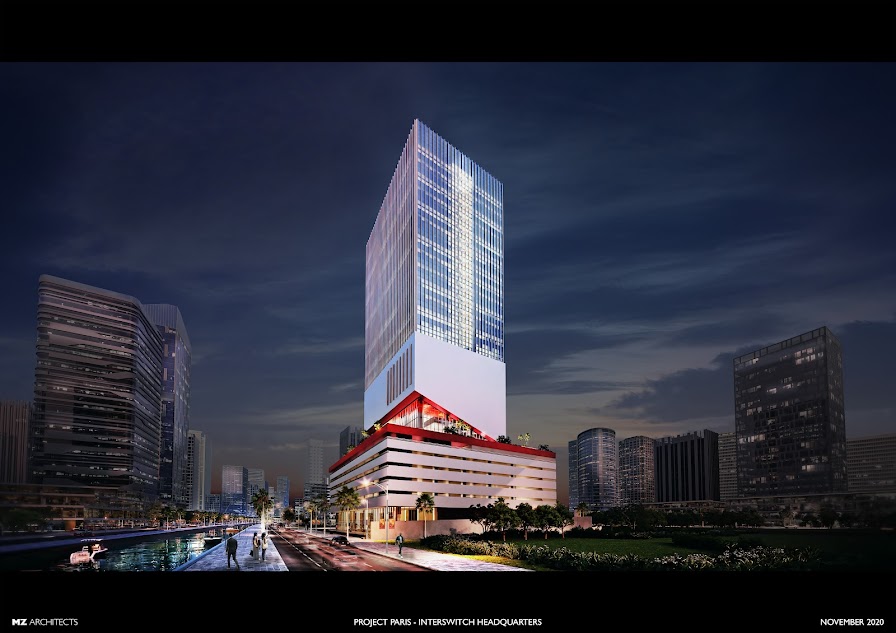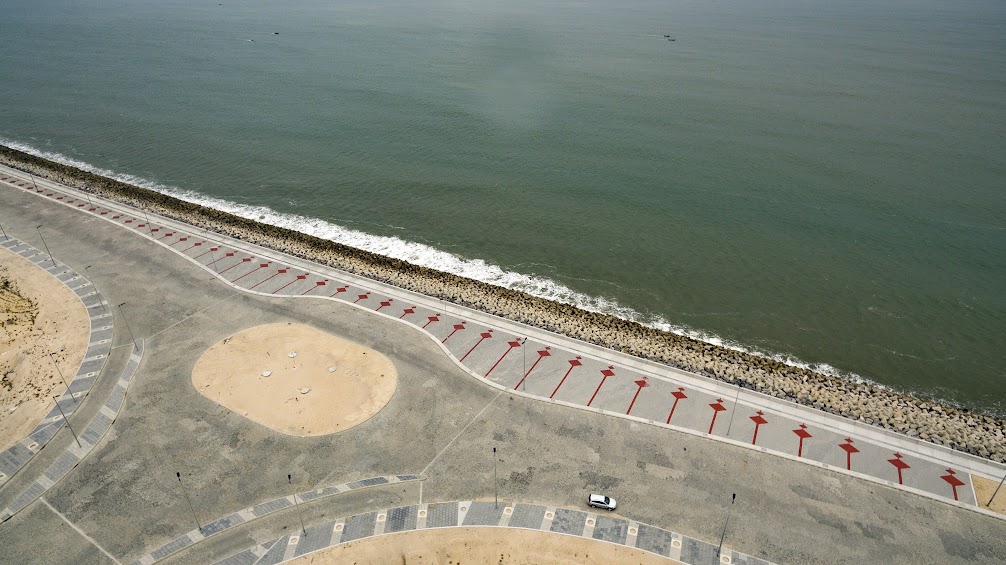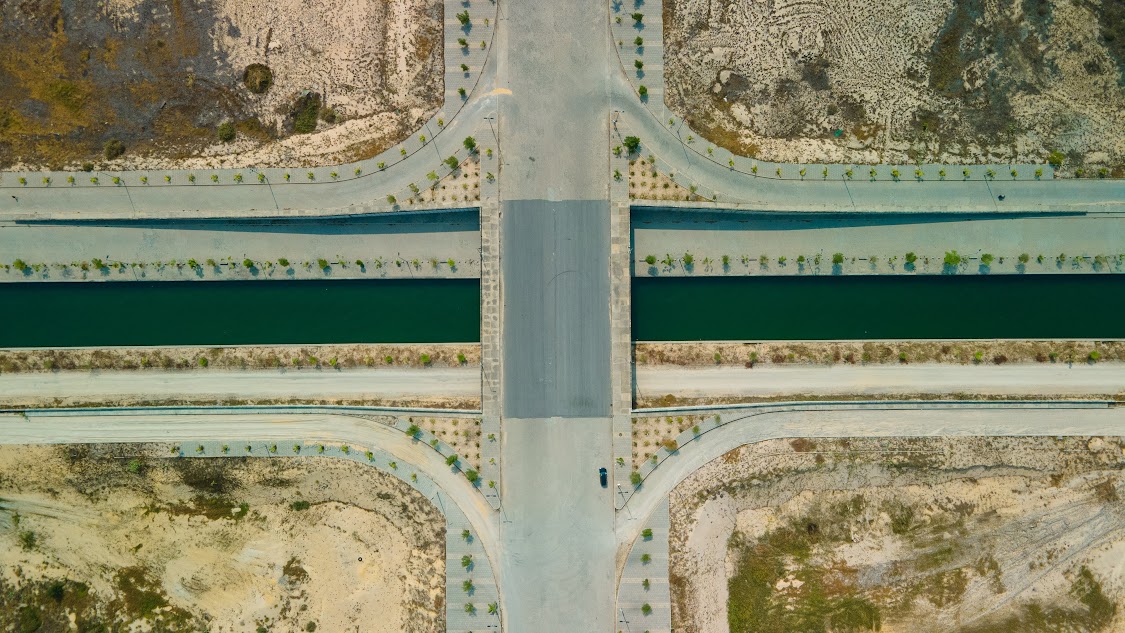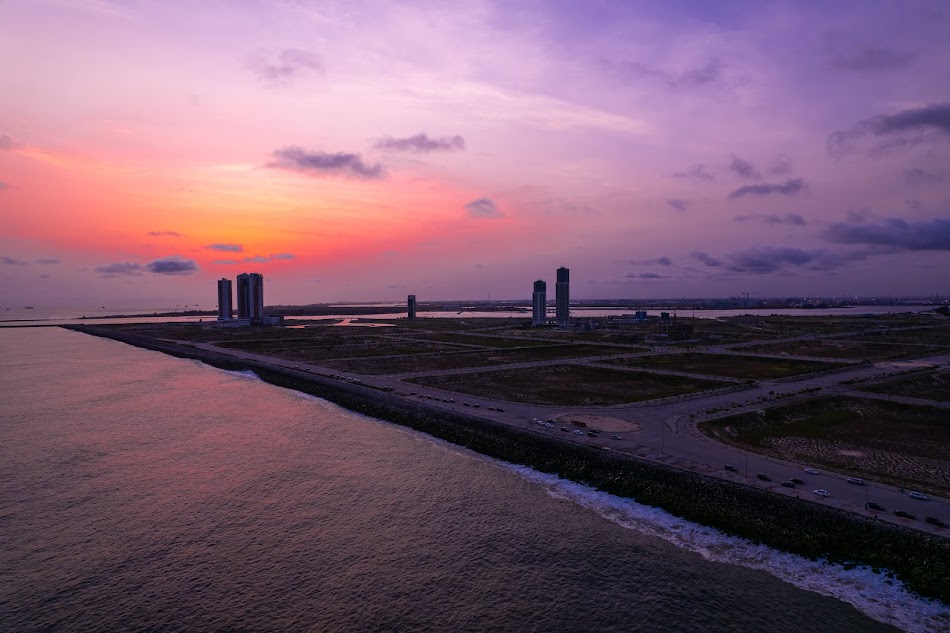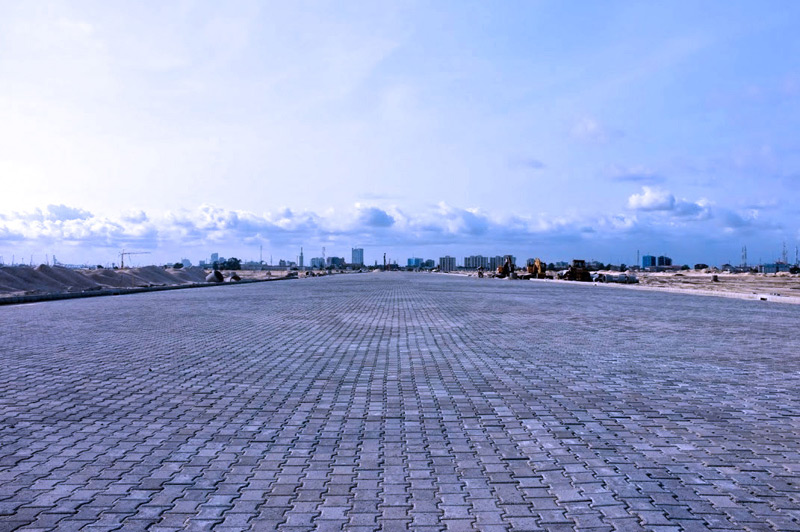

An important accomplishment thus far in Eko Atlantic City is the progress achieved on the construction of the ‘Great Wall ofLagos’. The Great Wall of Lagos was constructed to protect the shoreline of Victoria Island and the early phases of Lekki from coastalerosion.
Before the construction of The Great Wall, the waves from the Atlantic Ocean would regularly flood Victoria Island and theearly phases of Lekki, threatening countless lives and businesses.
The Great Wall of Lagos, reaching a total of 8.5km in length whencompleted, has already achieved its primary goal of protecting Victoria Island from Coastal Erosion. Once completed the wall willprotect the early phases of Lekki from coastal erosion as well.
To understand the Great Wall of Lagos, we have to start from the verybeginning of the story of Eko Atlantic City.


Since the beginning of the last century, records have indicated that sand and sedimentary materials along the coast of the region ofWest Africa have been transported from West to East by ocean currents. This process of transportation is known as a littoral drift.
Over time, interruptions to the littoral drift had appeared in the form of river dams, major port developments, and other coastaldisruptions such as shipwrecks. These interruptions resulted in large sand deposits in some areas and the extensive erosion of land inother areas.
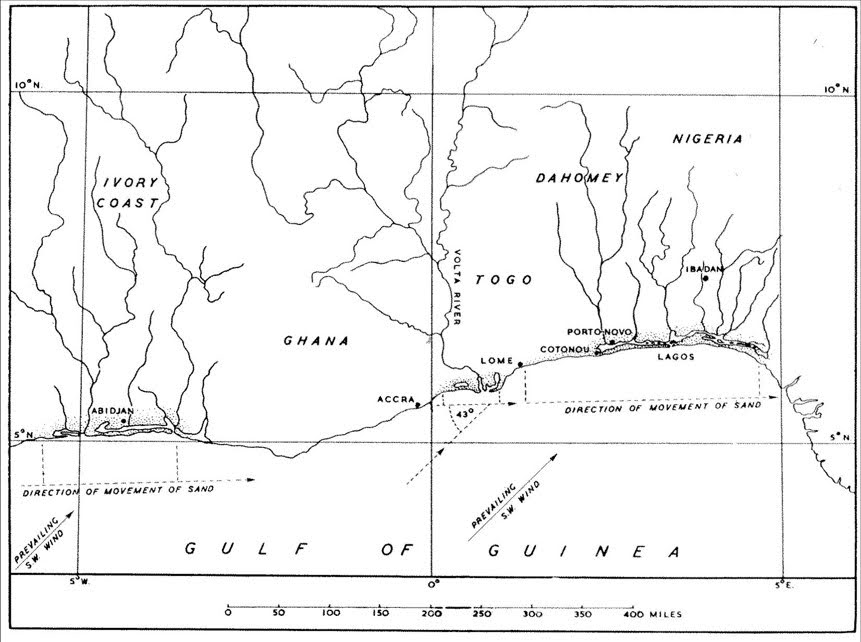

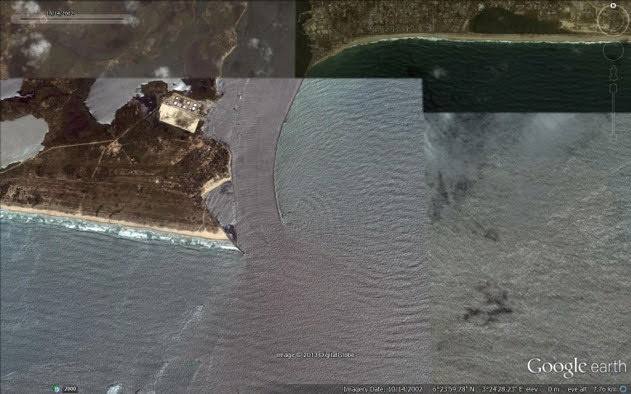

In Lagos, the genesis of the interruption to the littoral drift came with the construction of the rock moles at the entrance to the Portof Lagos. Before the moles were built large vessels delivering goods to Lagos were required to drop anchor some distance offshore due tothe shallow waters in the Commodore Channel, the channel which led to the pre-existing Port in Lagos.
To enable delivery of cargo toLagos Port, smaller vessels would be dispatched to the larger vessels anchored offshore and convey the cargo into the Port, a painstakinglytedious and extremely inefficient exercise. A major upgrade of the Port of Lagos was apparent and much needed to expand trade andeconomic growth.
To improve access to the Port of Lagos marine engineers built the East and West Moles. The construction of these two molesallowed for the dredging of the Commodore Channel which would allow larger vessels to enter the Port of Lagos.
Construction of the two moles began in 1905 and was completed in 1912, allowing larger trade ships to freely enter and exit thePort of Lagos and discharge their cargo directly, increasing the volume of trade through this vital new trade hub; the development andextension of the Port of Lagos played a major role in establishing Lagos as one of the major economies on the African continent.
However, constructing these moles interrupted the littoral drift. Sand and sedimentary materials which were previously depositedon the shores of Victoria Island and Lekki were now being trapped on the West side of the Port of Lagos.
Erosion ensued to the East of the Commodore Channel i.e. Bar Beach and the coastline of the Lekki Peninsula.By 2005, some 100years after the construction of the moles, 2 kilometers depth of beach front, the entire Bar Beach, was lost to erosion leaving VictoriaIsland directly exposed to heavy ocean surges and with no protection from the Atlantic Ocean.
Victoria Island and Lekki’s businesses,residents, and properties were now under severe threat.
Urgent action was required to avert an ecological disaster and the potential loss of the busy commercial hub of Lagos VictoriaIsland.
Since the beginning of the last century, records have indicated that sand and sedimentary materials along the coast of the region of West Africa have been transported from West to East by ocean currents. This process of transportation is known as a littoral drift.
Over time, interruptions to the littoral drift had appeared in the form of river dams, major port developments, and other coastaldisruptions such as shipwrecks. These interruptions resulted in large sand deposits in some areas and the extensive erosion of land inother areas.
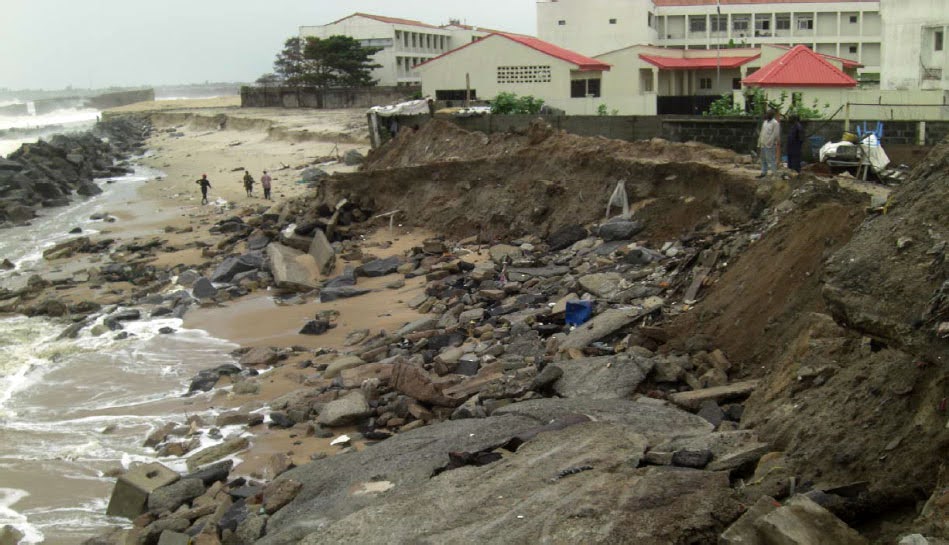

With Victoria Island being one of the central business districts in Lagos, the state was in danger of not only losing valuable landused by many thousands daily, but the loss of revenue from this bustling district in Lagos would have a catastrophic effect on the economyof Lagos.
It is estimated, by using market rental rates at the time, that roughly Four Hundred Sixty Billion Naira in yearly rental revenuewould have been lost had Victoria Island been inundated by coastal erosion.
This number does not account for the Gross DomesticProduct of the businesses and residents themselves in Victoria Island.
Lastly, If the onslaught of the ocean surges on Victoria Island had been allowed to continue, Victoria Island would have fallen intothe Atlantic Ocean. Without the protection of Victoria Island, the other densely populated areas of Lagos, including Ikoyi, Lagos Island,and all the other communities along the Lagos Lagoon would now be bearing the brunt of the relentless ocean surges.
Something had to be done.
Recognizing the dire need for action, Governor Bola Ahmed Tinubu called for solutions.
South Energyx Nigeria Limited, the cityplanners and designers of Eko Atlantic City, worked with marine engineers Royal Haskoning to create Eko Atlantic City and submittedthe project to the Lagos State Government for consideration as a solution that could solve the problem of coastal erosion at no financialcost to the Government.
The sustainable solution created by South Energyx and Royal Haskoning called for reclaiming the land that had been lost to 100years of coastal erosion and erecting a sea revetment to protect Victoria Island permanently from the onslaught of the Atlantic Ocean.
The design and testing of a sea wall, which could stand the worst storms in 1,000 years, was tested to its’ limits in Copenhagen at theDanish Hydraulic Institute.
A Concession Agreement was concluded in July 2006 between the Lagos State Government and South Energyx Nigeria Ltd.Commencement on The Great Wall of Lagos could begin.
The Great Wall of Lagos is a large sea revetment that protects the emerging new city as well as Victoria Island from the threat offlooding due to ocean surges.
The Wall was designed by Royal Haskoning Marine Engineers from Holland: world renowned for theirover 100 years of experience in urban planning and development.
Royal Haskoning, in its design process, took into consideration theAtlantic’s tough nature and designed a wall that would more than sufficiently protect the city.
At the end of this design process, Royal Haskoning took this design to the Danish Hydraulic Institute and built a full-scale model ofthe wall to be built in Eko Atlantic City. The sea wall was subjected to the worst waves predictable in a 1,000-year cycle. The finished seawall model withstood the tests without showing any signs of distress.
The physical tests of The Great Wall of Lagos can be seen in this video below:
Testing for the planned 8.5-kilometer-long sea wall finished in early 2009, and construction began on The Great Wall of Lagos inmid-2009. Today, you can see the progress being made every day off Ahmadu Bello Way. As of today Eko Atlantic City has completedover 6.5 kilometers of sea wall and grows daily.
“We are taking every step to ensure that the highest levels of safety and sustainability are being put in place at Eko Atlantic,” saysMr Ronald Chagoury Jr., Vice Chairman of South Energyx Nigeria Limited, a subsidiary of the Chagoury Group.
“One of themeasures is the ‘Great Wall’, a large sea revetment being constructed according to the highest standard of marine engineering availablein the world today.
To achieve this result, we’ve partnered with an international team of highly skilled coastal and marine engineers andapplied a series of physical scale model tests and computer simulations in Denmark to assess and confirm its stability under the pressureof extreme wave conditions.”
To have a better understanding of how exactly the Great Wall of Lagos was built, watch the video below:
The Great Wall of Lagos is formidable in its design and already does magnificent job of protecting the coastline, even though it’snot yet finished. Over the…
With the Concession Agreement in place between Lagos State Government and South Energyx Nigeria Limited, the sea walldesigned and tested, the project would begin. Eko Atlantic began reclaiming land lost to erosion and building the sea revetment.
Workingwith South Energyx Nigeria Limited, Governor Tinubu, Governor Fashola, and now Governor Ambode with the support of the FederalGovernment of Nigeria have collectively turned a liability into an asset.
In 2008 physical works began on Eko Atlantic City. The vision is to create a unique new city built on a vast area of land reclaimed from the ocean along the coast of Victoria Island in Lagos, Nigeria.
Mid-2009, the first rocks for The Great Wall of Lagos were being placed, and the core of the sea wall was underway.
Dropping the rocks into the ocean to form the base of the Sea Wall was not enough, the rocks had to be shaped and formed by excavators.
This process was able to be achieved as the excavators being used throughout the process of construction are all equipped with a pinpoint accurate GPS.
This GPS allowed excavators to work accurately underwater to create a finished product up to design specifications.
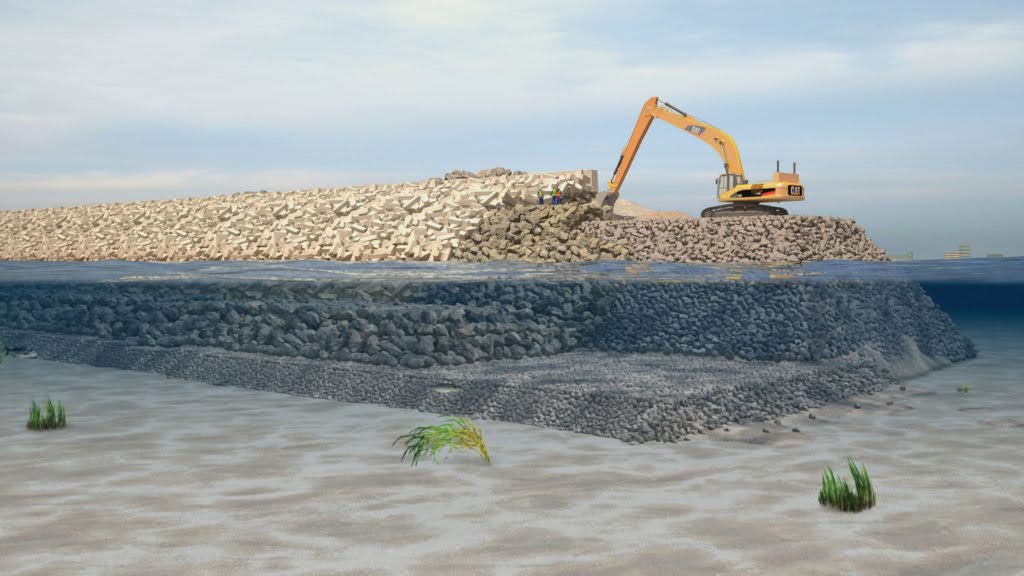

The rocks, after being delivered and formed, begin to take shape both below the surface of the water and above. It is now time to start building the primary armor section of the Sea wall: A series of interlocking, x-shaped concrete blocks that are called macropores.
Each accolade is made of reinforced concrete, built on site, and weighs a total of 5 tons. Eventually, 100,000 accolades will be placed in a predefined grid, using a GPS for pin-point accuracy of which over 50,000 have been placed.
In addition, samples of the concrete used to build each batch of accolades are sent to an independent lab to ensure the concrete reaches a proper level of strength.
As the final step to the Great Wall of Lagos, an 8.5 kilometer long, 12.5 metre wide, promenade will be built on top of the Great Wall.
This promenade will provide a tremendous amount of recreational space to residents looking to take advantage of the ocean front open area and impressive ocean views.
Throughout this entire process, the designers of The Great Wall of Lagos remain on site every day to monitor the progress of the building of the sea wall to ensure the quality of construction is up to the design level. Nothing is left to chance.
As the Wall expanded further and further, Victoria Island began seeing the positive effects of the works that were happening 2 kilometers off shore. The ocean surges that were once hitting Victoria Island were now hitting The Great Wall of Lagos.
Today Lagos is already reaping the benefits of the Great Wall of Lagos. Roads that were once inundated are now motorable. Properties that were once abandoned have now seen re-development and re-investment.
Kuramo Waters, which had collapsed and lefttower foundations vulnerable to ocean currents is now safe for development once again.
Businesses and residents alike have returned to Victoria Island and adjacent areas having full confidence that the once severe threatof ocean surges into the city has now been eliminated.
Countless developments and projects have sprouted up since The Great Wall of Lagos construction began further showing thepositive impact the wall has on not only Eko Atlantic City but Lagos as a whole. Eko Atlantic has saved Victoria Island and, soon, theearly phases of Lekki, all while reclaiming land lost to over 100 years of coastal erosion.
The Great Wall of Lagos has reached a total length of 6.5km of the planned 8.5km it will eventually achieve.Eko Atlantic City as a whole has also progressed tremendously. To date over 6,500,000 square metres of land have been reclaimed.
The independent utilities that service the city are already in place. These services include a road network, an undergroundstormwater drainage system, a canal network, water & sewage treatment, and a fiber optic & telecom network.
There are many tower developments already completed and others under construction throughout the city. Further the city isalready alive today with residents and office tenants
Eko Atlantic City and The Great Wall of Lagos are providing a tremendous amount of benefits to both Victoria Island/Lekki and Lagos as a whole.
Businesses and residents that had once left these areas have now returned. Consider developments that would have otherwise neverbeen constructed have now come to fruition.
Eko Atlantic City will continue to grow and complete its goal of providing a unique new city with modern and efficientindependent infrastructure facilities.
The future is bright in Lagos, and Eko Atlantic City is delighted to be a part of that future.
About Eko Atlantic
Eko Atlantic is a new coastal city being built on Victoria Island adjacent to Lagos, Nigeria, to solve the chronic shortage of real estate in the world’s fastest-growing megacity. It is a focal point for investors capitalising on rich development growth based on massive demand – and a gateway to emerging markets of the continent
©2023 Eko Atlantic. All rights reserved.
